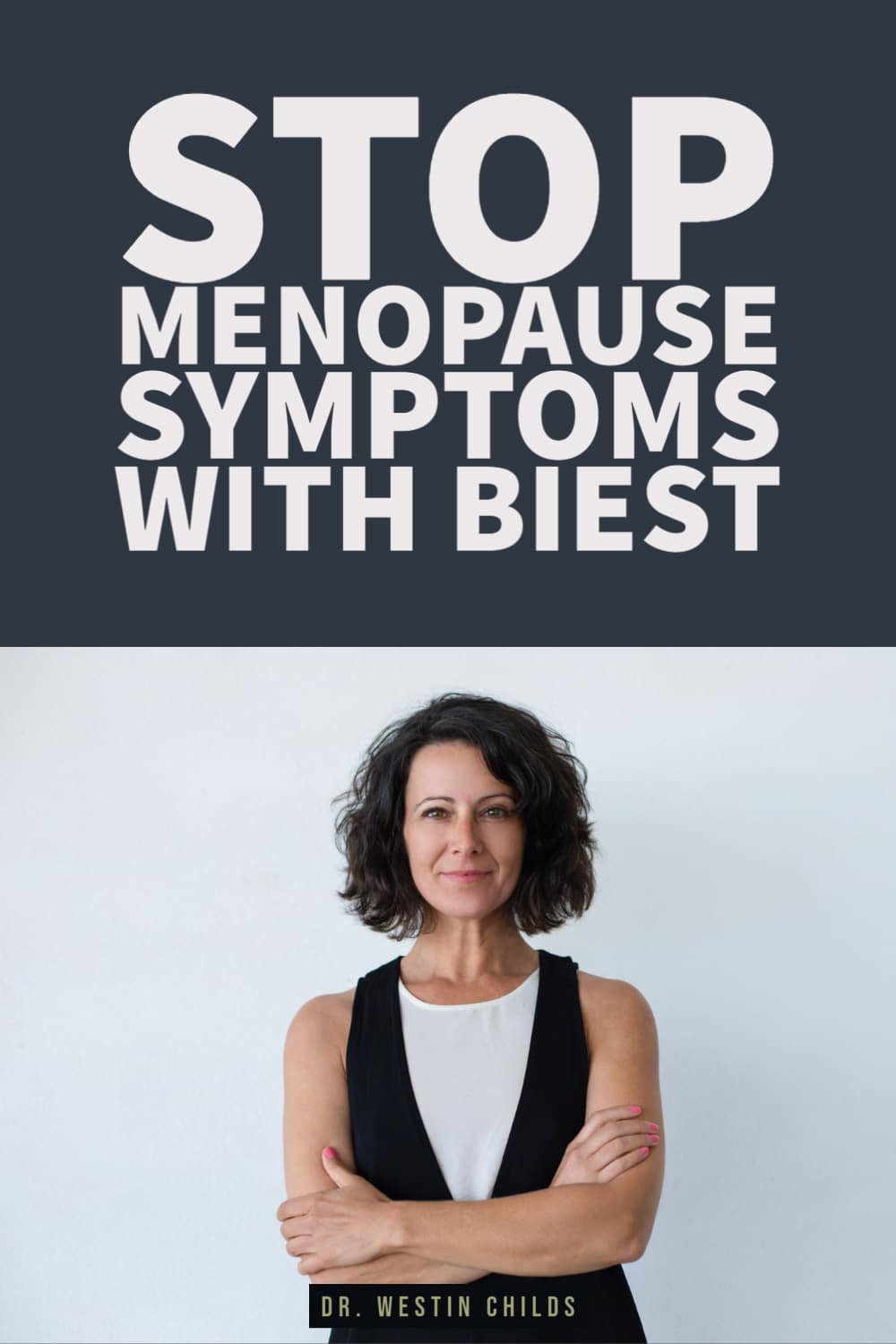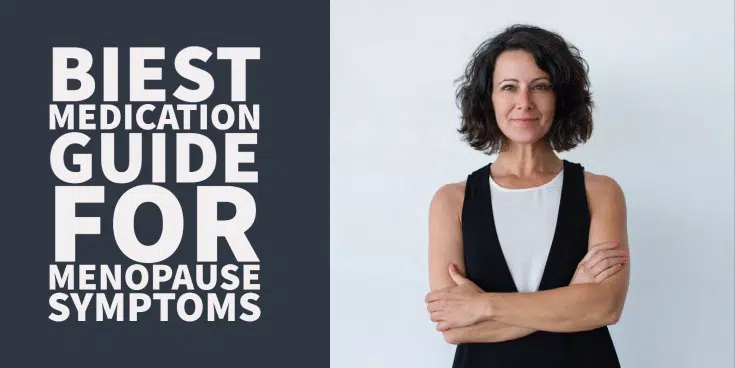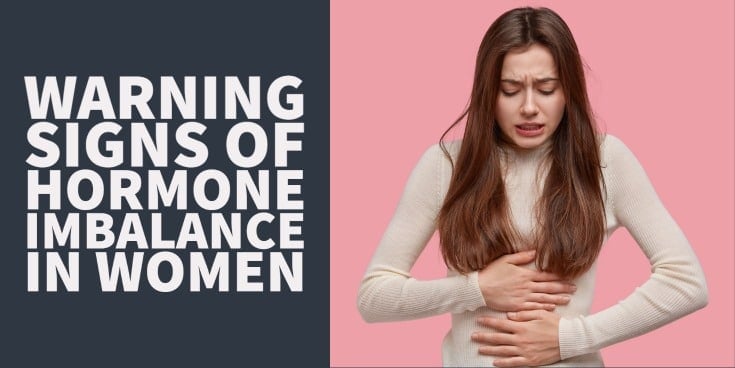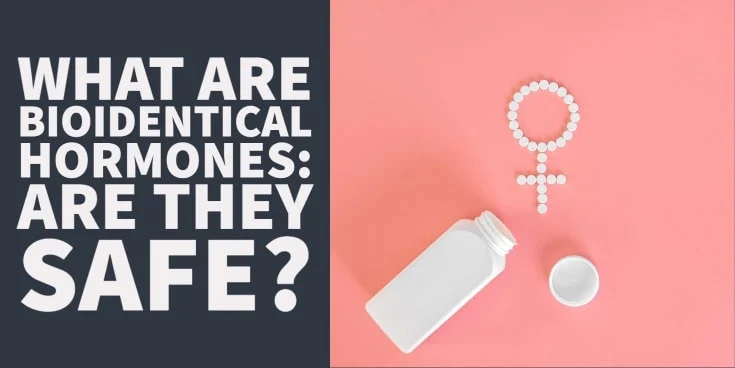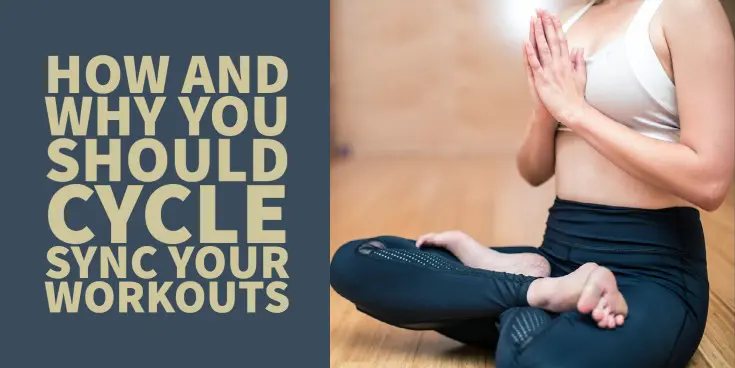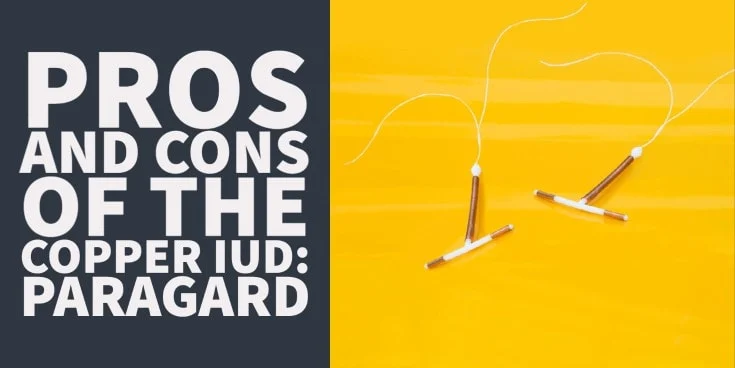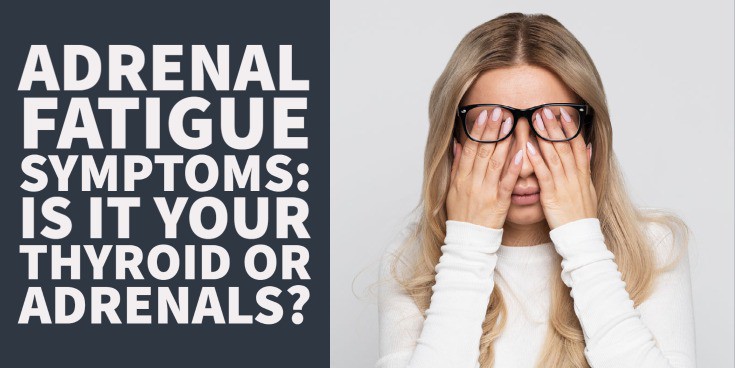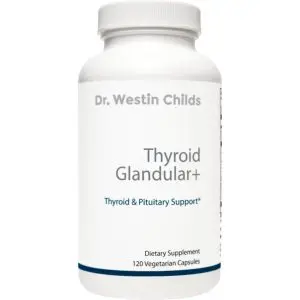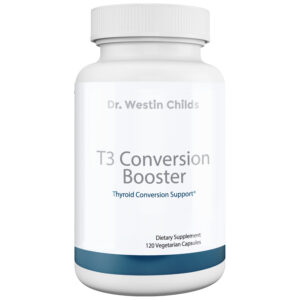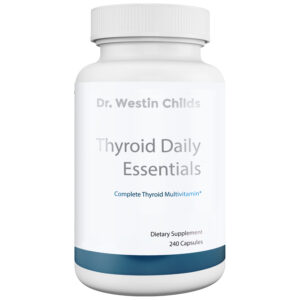Biest may be the preferred way to treat low estrogen in the setting of menopause.
Learn more about why this combination medication is preferred to other formulations, how it works in your body, how it may be protective against breast cancer, how to dose it, and more:
Bio-Identical Hormone Replacement Therapy & Biest
Bio-identical hormone replacement therapy is the use of hormones that look exactly like the hormones your body produces naturally.
These hormones are then given to patients to relieve problems associated with hormone imbalance (such as low estrogen).
Biest is a perfect example of a bio-identical hormone and it is often (or should be) used to treat cases of low estrogen and menopause.
But what exactly is biest?
Biest is a combination of estrogens formulated into one compound.
Thus the name “bi” (meaning two) and “est” (referring to estrogen).
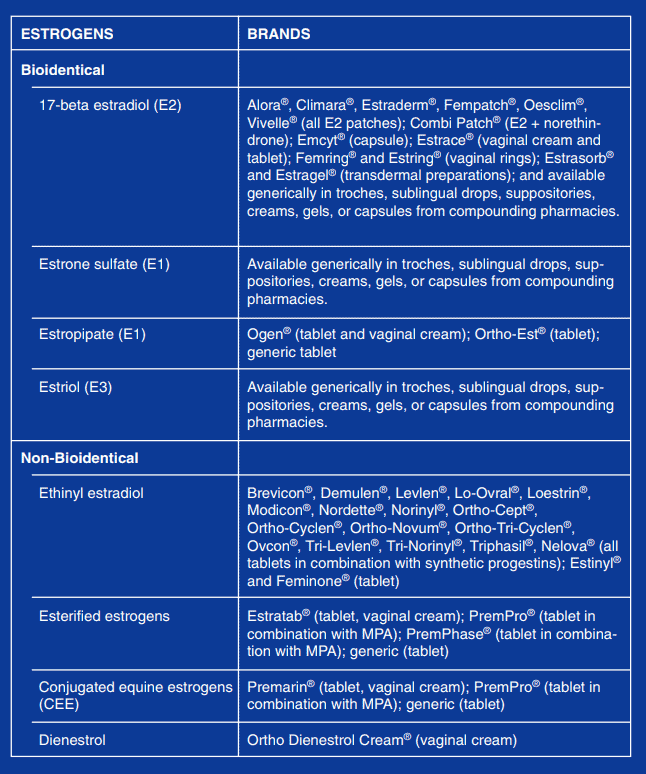
The two estrogens included in this are estradiol and estriol.
Estradiol is considered the most powerful and most potent estrogen in the female body while estriol is considered a much weaker estrogen (1).
Biest is most often used as part of HRT (hormone replacement therapy) for women who suffer from menopause and low estrogen.
Because of its unique properties, it may be preferred when compared to synthetic estrogens such as those found in birth control pills (2).
Using Biest for Menopause & Low Estrogen
Does using biest have any benefits over more traditional medications such as estradiol?
The answer is probably and here’s why.
Biest includes a combination of the most powerful estrogen that your body produces naturally (estradiol) and a weaker, more protective estrogen (estriol).
In order to understand the benefit, you need to know just a few basics about HRT.
The first has to do with the concern over using estrogens and estrogen therapy to treat low estrogen.
In the early 2000s, there was a study (the Women’s Health Initiative) that showed that using estrogen, specifically in the setting of menopause, may lead to an increased risk of heart disease (heart attacks), breast cancer, stroke, and venous thromboembolism (3) (blood clots).
Up until this point up to 30-40% of women who were post-menopausal were using HRT (4) which was being actively prescribed by doctors.
The women undergoing treatment for HRT during this time were experiencing significant relief from their symptoms but were placed at an increased risk of the events listed above.
This caused a massive shift in thinking among physicians and MANY women were pulled off of HRT in a hurry.
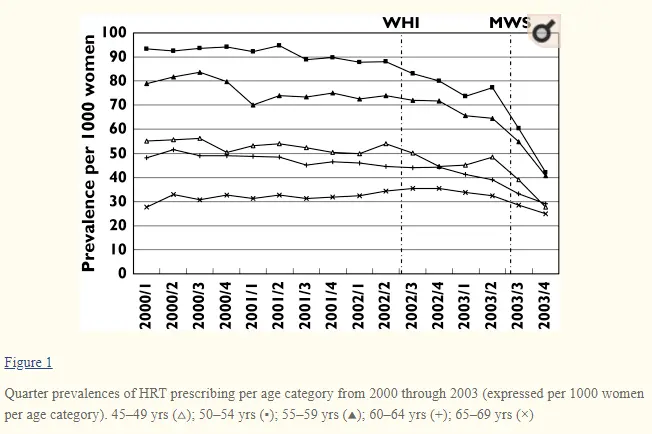
This study has had a lasting impact on many physicians who are unwilling to prescribe HRT due to this perceived risk (5).
The problem with the study is that it tested what are known as synthetic estrogens, such as Prempro, Premarin, and progestin (pharmaceutical variants of actual hormones that females produce naturally).
Even though these hormones are NOT the same as the hormones that your body produces naturally (these are referred to as bio-identical hormones), both bio-identical and synthetic hormones have been lumped into the same category in terms of these risks.
This is a long introduction to biest, but this is where it takes center stage.
Studies have shown that there is indeed a difference between how stimulatory certain estrogens are on tissues such as breast tissue and endometrial tissue.
What this means is that there are weak estrogens and strong estrogens, and some estrogens may be balancing the effects of stronger estrogens (7).
Estriol is an example of one of these weaker estrogens and one that has the potential to combat the increased potency of estradiol (8) (especially when used alone).
In fact, newer studies have shown that the use of bio-identical hormones does not show an increased risk of these negative side effects (cancer, stroke, etc.).
Wouldn’t it be nice if you could use the exact same hormones that your body produces naturally to completely eliminate the symptoms of menopause, without experiencing the increased risk of heart disease, breast cancer, and so on?
Well, that’s the logic behind the use of biest and other bio-identical hormones.
It’s important to realize that no hormone is perfect, however, so before you jump in and use biest you need to be evaluated by a physician to assess your own personal risk.
Dosing Based on Symptoms & Blood Tests
Another important factor, as it relates to risk factors and side effects, is the dose of your medication.
The best approach to take, when using hormones, is to use the absolute minimum amount of hormone necessary to completely resolve all of your symptoms without causing the symptoms of excess.
This can be done by carefully monitoring your symptoms and by watching your serum levels of estradiol and progesterone (you can also assess your hormones via 24-hour urinary testing as well).
Biest is usually formulated with 80% estriol and 20% estradiol.
This ratio can be adjusted based on the needs of the individual.
For instance:
Your Doctor may prescribe 70% estriol and 30% estradiol or even 90% estriol and 10% estradiol.
The idea is to use no more estradiol than necessary to help reduce the symptoms of menopause and to balance that with a sufficient amount of estriol.
The estradiol component of biest can be manipulated (either up or down) if you are struggling with persistent symptoms.
Remember:
Estradiol is the most potent estrogen in the body and the symptoms of menopause tend to be primarily caused by the reduction in estrogen (9) (estradiol) produced naturally by your ovaries.
In order to achieve symptomatic relief, you NEED some estradiol, but you don’t want to use too much.
Women who are post-menopausal, and experiencing side effects such as hot flashes, weight gain, and depression, will often notice a near immediate reduction in their symptoms when starting biest (10).
Dosing can be started at a very low dose and increased until the side effects stop.
While you are adjusting your dose make sure that you monitor for symptoms of excess including breast tenderness and menstrual bleeding (more on side effects below).
Your Doctor can, and should, work with you as you start biest to help titrate and tweak your percentage to find an optimal level for you.
This may take some trial and error, so be patient!
As a provider, and after treating hundreds of patients, I can tell you that no two women are exactly alike.
The amount of hormone that they require will be different and unique to their body.
But taking this approach has allowed me to help 98+% of women suffering from menopausal symptoms.
Application (How to use Biest effectively)
So, how do you use biest if you plan to take it?
Biest is usually formulated in either a cream or a gel by a compounding pharmacy.
This may be different from other hormones you are used to taking because most medications are taken orally (meaning by mouth).
When you take a medication by mouth, the medication must go through the intestinal tract where it is absorbed and then processed directly by the liver via the portal system.
The liver will then break down a large percentage of the hormone into smaller pieces to help your body get rid of it.
This may lead to the concentration of the hormone in the liver which can stimulate hepatic protein synthesis and may increase inflammatory markers and markers of coagulation and so on (12).
The use of oral estrogen also dramatically increases the creation of sex hormone-binding globulin which can bind to and inactivate testosterone (which is in low supply during menopause!).
Once the hormone is broken down it is then sent to the heart where a portion of the original hormone absorbed is directed to your cells and tissues.
This process should be compared to the natural process that your body goes through when it releases hormones through endocrine glands (hormone glands).
Your body releases hormones directly into the bloodstream where your hormones go straight to target tissues FIRST as opposed to being broken down by the liver first.
In almost all cases, it’s best to mimic the natural flow of the body when using hormone replacement therapy.
For this reason, the transdermal route may be preferred over oral medication.
In addition, when using biest, you’ll also want to make sure that you put it in the appropriate place on your body.
The forearms are perfect “real estate” for hormone application because the skin is thin (13), there isn’t very much fat there and your superficial veins will carry the hormone directly to your heart for pumping throughout the body.
Other areas that biest can be used include the inner thighs, vaginal area, peri-anal area, and neck.
If you are using other hormones, such as testosterone or progesterone, make sure that you do not apply more than one hormone to the same spot on your body at a time.
Some hormones, such as progesterone, will need to be alternated each time you use them.
Another quick tip:
Estrogen has an enhancing effect on the skin and can help reduce wrinkles/age spots (14).
Some patients will apply their biest to their forearms and then do a quick swipe of hormone on the back of their hands, neck, and even face.
You don’t want to apply the hormone to these places directly, but a small residual amount may work wonders!
Side Effects to Watch out for
Side effects from biest tend to come from either underdosing or from overdosing.
It would be unusual to respond directly to the active hormones because your body has been producing them naturally for many years (remember they are bio-identical).
With this in mind, you can imagine a scenario in which you might be reacting to the absolute dose vs the hormone itself.
For instance:
Using an insufficient dose will lead to the persistence of symptoms such as hot flashes, weight gain, and depression.
This does NOT mean that the medication is causing these symptoms, instead, it may mean you need to increase your dose.
Symptoms that you are not using enough biest may include:
- Persistent hot flashes
- Persistent weight gain
- Persistent mood issues or depression
- Persistent vaginal dryness and decreased libido
- Persistent night sweats or insomnia
On the other hand, it’s also entirely possible that you are using TOO MUCH hormone and may be experiencing side effects associated with excessive dosing.
This would be an indication to cut down on your dose because excessive dosing may lead to overstimulation of estrogen receptors and may increase your risk (if continued long-term) of breast cancer and so on.
You can find a list of excessive dosing below:
- Breast tenderness
- Menstrual bleeding
- Abdominal cramping
- Water retention or bloating
- Nipple tenderness
- Breast fullness or enlargement (with or without tenderness)
- Pelvic cramps (with or without bleeding)
- Continued hot flashes at very high doses (hot flashes may subside and then persist if dosing is extremely high)
When using biest ensure that you do NOT experience the side effects listed above.
If you do, then reducing your dose (or stopping for 2-3 days) should be sufficient to bring you back to normal.
If there is any confusion about your dose make sure to discuss it with your physician or re-order blood tests.
How to get Biest from your Doctor
In order to get biest, you will need a prescription from a physician (MD or DO).
Most conventional doctors, such as family practice doctors or endocrinologists, may not be familiar with using biest or other bio-identical hormones.
The reason for this has to do with the fact that hormone replacement is not taught in medical school.
So, in order for a physician to be knowledgeable on the subject, they usually have to take extra classes or courses to help bring them up to speed.
The logic and theory behind bio-identical hormone use are also vastly different from the conventional hormone replacement therapy model that standard physicians use.
Conventional doctors don’t have a problem giving out massive doses of insulin, birth control, or steroids, but they seem to have a problem when it comes to bio-identical hormones.
Much of this simply has to do with the fact that they are not educated on the topic.
It’s my experience that most physicians when they see how effective these hormones can be, and when they are confronted with the studies that show they are effective (15), they tend to be willing to give them a try.
But having this discussion is generally not worth your time or effort when you can find a physician who specializes in hormone replacement therapy relatively easily.
If you are interested make sure you look for a doctor that specializes in Integrative medicine, anti-aging medicine, or functional medicine.
Most women find that their symptoms are taken more seriously and they are “listened to” by integrative Doctors compared to conventional physicians (this is actually seen in studies (16)).
Final Thoughts
Biest is a combination medication used to treat low estrogen which can also be very effective in menopause.
This formulation of estrogens contains both estradiol and estriol and may be superior when compared to just estradiol alone.
Estriol may help to reduce the powerful impact that estradiol has on breast and endometrial tissues by acting as a minor anti-estrogen.
If you are considering using HRT for menopause then biest may be the preferred option because it is bio-identical and contains a more complete hormone profile when compared to generic pharmaceutical medications.
As always, ensure that you titrate your dose based on your body and on your symptoms.
Doing this should reduce your risk of negative side effects.
Now I want to hear from you:
Have you used biest previously? Are you using it now?
Has it helped reduce your symptoms?
Why or why not?
Leave your comments below!
